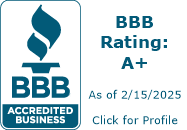
Before delving into the risks of a 1031 exchange, it is important to define at a very high level what a 1031 is. A 1031 exchange allows individuals who sell an investment property to use the proceeds from the sale to invest in another “like” property. The 1031 exchange allows property owners to defer their capital gains tax liability. The purchase of a like kind property must occur within 180 days.
Although the definition above sounds simple there are a number of considerations to keep in mind before engaging in a 1031 transaction. Ensure that you fully understand the rules associated with this type of exchange. Details can be found at www.irs.gov. One requirement of all 1031 exchanges is that an intermediary be used. Once a property is sold, money is placed with this intermediary until a like kind property can be located and closed on. Intermediaries are unregulated and the funds held by them are not FDIC insured like a traditional deposit at a bank. As a result a number of bad apples have crept into the intermediary business. A Denver Post article reports that in the past year “Three hundred and thirty investors nationwide including 80 in Colorado, lost 132 million when qualified intermediaries absconded with their money.”
How do you protect yourself from the risk associated with financial intermediaries? First, ensure that you are working with a reputable intermediary. If possible look at their financials to ensure that they are not at risk of bankruptcy (if an intermediary declared bankruptcy, your exchange money will likely be at risk) . Second, contact your local better business bureau (www.bbb.org ) to see if any complaints have been filed against the intermediary. Finally, it might be best to work with someone you have an existing financial relationship with such as your bank (many of them offer 1031 intermediary services, for example BB&T.
By taking these steps and making prudent business decisions, one can eliminate at least one of the possible perils in the 1031 transaction.
